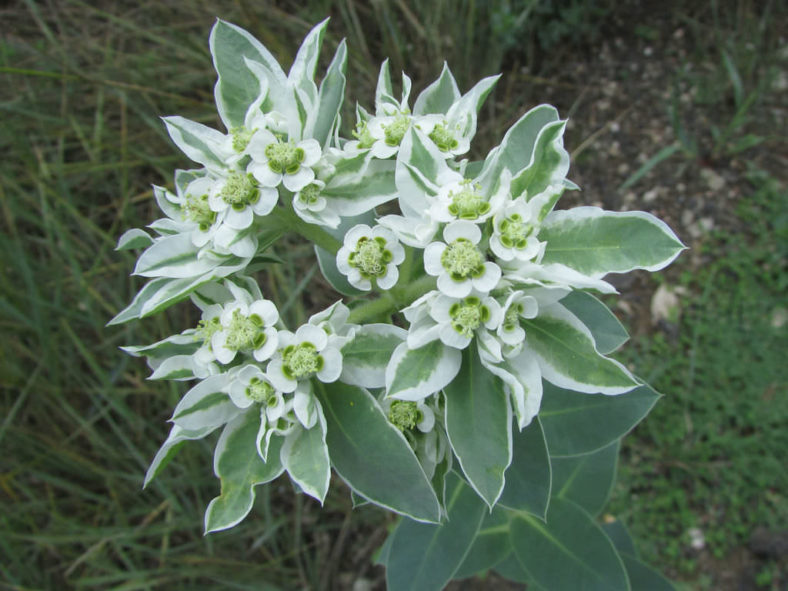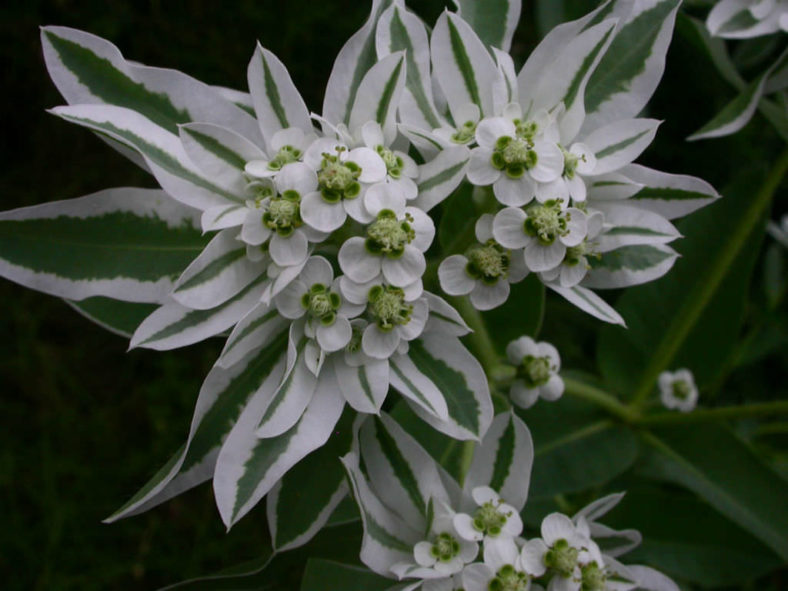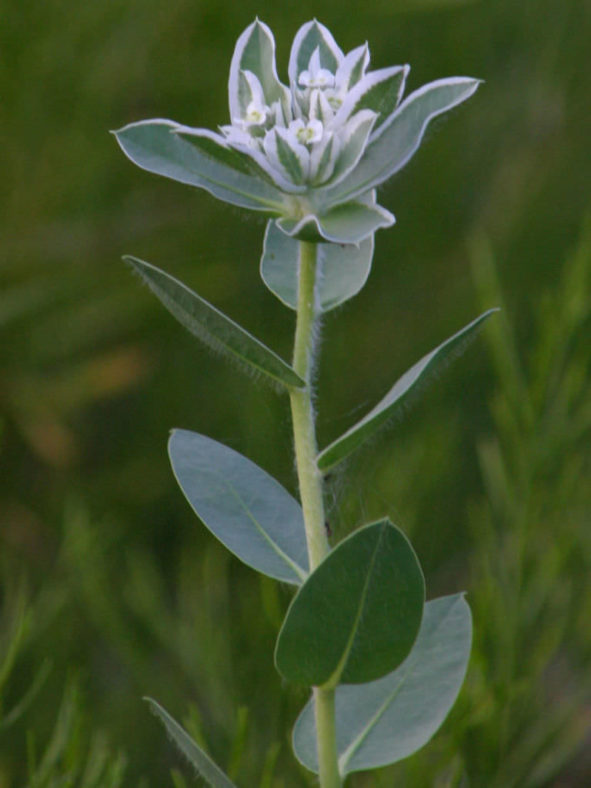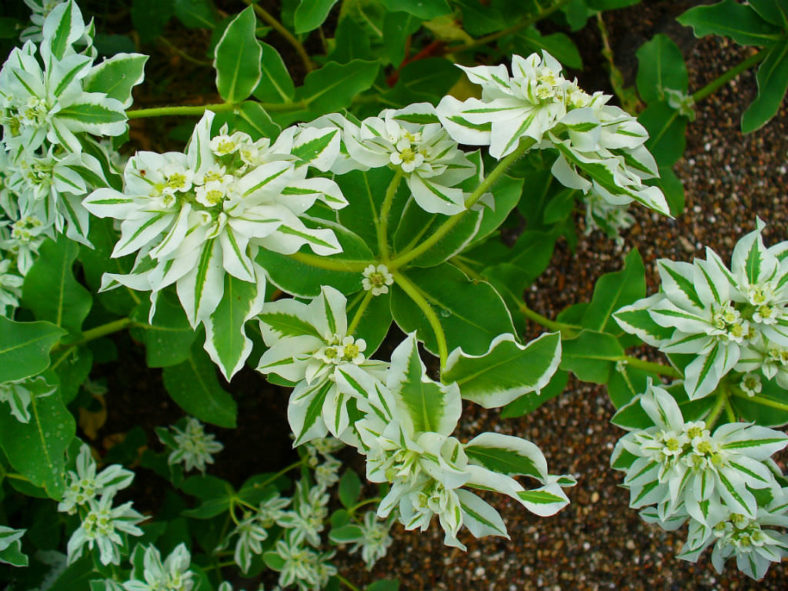Scientific Name
Euphorbia marginata Pursh
Common Name(s)
Smoke on the Prairie, Snow on the Mountain, Variegated Spurge, Whitemargined Spurge
Synonym(s)
Agaloma marginata, Dichrophyllum marginatum, Lepadena marginata, Tithymalus marginatus
Scientific Classification
Family: Euphorbiaceae
Subfamily: Euphorbioideae
Tribe: Euphorbieae
Subtribe: Euphorbiinae
Genus: Euphorbia
Etymology
The specific epithet "marginata" (pronounced "mar-jen-AY-tuh") means "having a border or margin" and refers to the distinctive leafy bracts with white margins.
Origin
This species is native to parts of temperate North America, from eastern Canada to the southwestern United States. It is naturalized throughout much of China.
Description
Euphorbia marginata is an annual, single-stemmed plant that can grow up to 3 feet (90 cm) tall, usually unbranched below the inflorescence. The leaves are medium green, with the upper leaves gradually developing showy, clean white margins or wholly white. They are elliptical, measuring up to 2.8 inches (7 cm) long and 1.2 inches (3 cm) wide.
Dense clusters of inconspicuous, greenish-yellow flowers with narrowly elliptic to oblanceolate bracts with white margins appear at the stem tips from mid-summer to early fall. The fruits are pale green, roundly trilobate, and contain pale grey or whitish seeds.

Hardiness
It is grown as an annual plant, so it has no USDA hardiness zone.
How to Grow and Care
Euphorbias are very easy to care for. They require a little pampering to become established, but once they are, they are self-sufficient. More die from too much care and watering than from neglect. Euphorbias need well-draining soil and lots of sunlight. They are not particular about soil pH but cannot tolerate wet soil. Unlike most succulents, Euphorbia does not handle long periods of drought well. It may need weekly watering during the summer. Water whenever the soil is dry several inches below the surface. Water deeply, but don't let them sit in wet soil, which can cause root rot. Add some organic matter or fertilizer to the planting hole. Feed with a half-strength fertilizer monthly if you are growing them in containers or your soil is poor.
Euphorbia can be grown from seed, but they can be difficult to germinate (or even find). It is usually propagated by cuttings. This can be tricky because of the exuding sap. Rooting hormone is recommended with Euphorbias. They tend to grow problem-free, but there are a few pests and diseases to be alert for.
See more at How to Grow and Care for Euphorbia.
Links
- Back to genus Euphorbia
- Succupedia: Browse succulents by Scientific Name, Common Name, Genus, Family, USDA Hardiness Zone, Origin, or cacti by Genus
Photo Gallery
Click on a photo to see a larger version.


